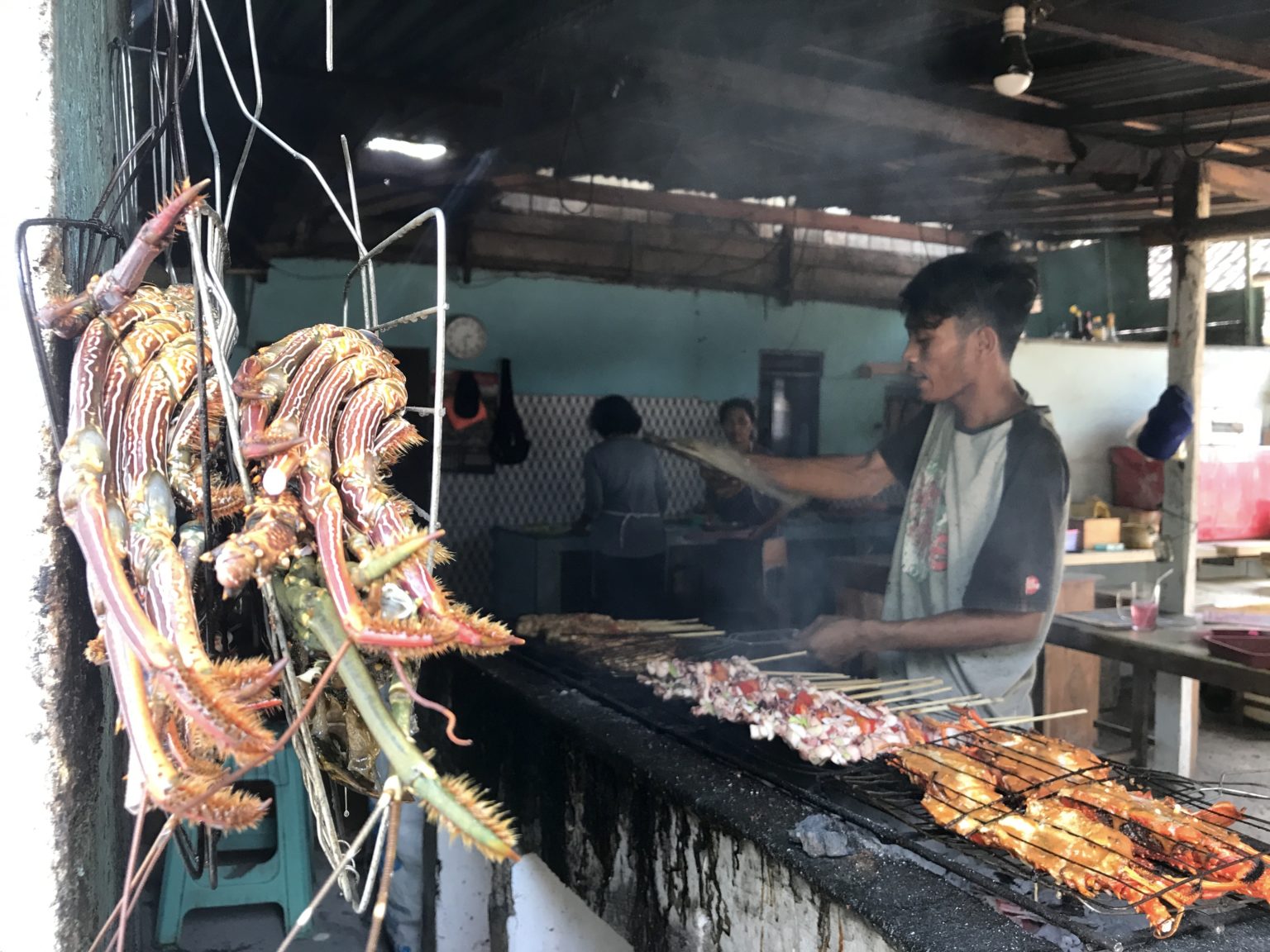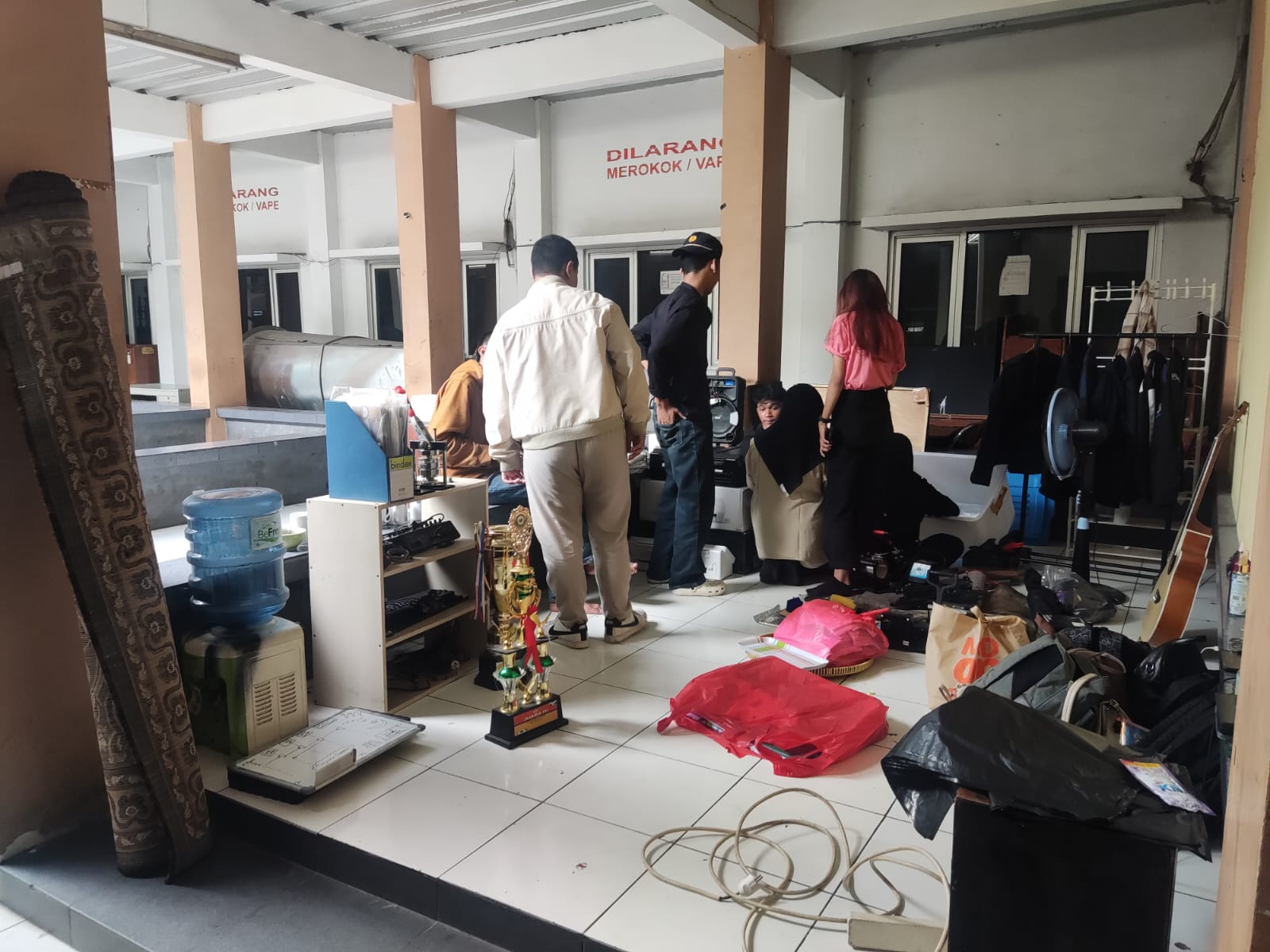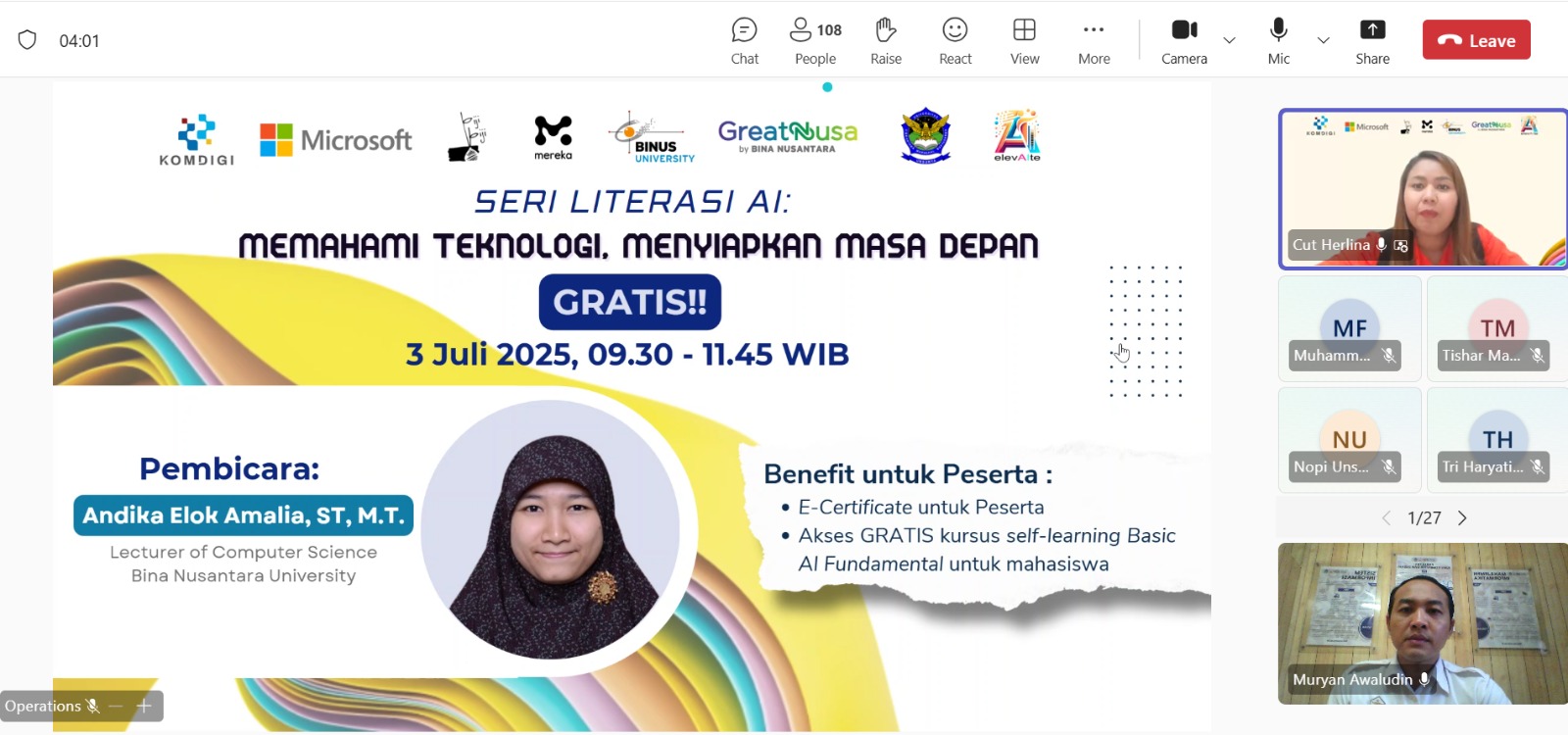- The solar power installation in the fishing village of Kondangmerak Beach, Sumberbening Village, Bantur Subdistrict, Malang Regency, East Java generates 3.400 watts of electricity.
- The electricity is used to produce ice blocks for storing the fish caught by local fishermen. Each fishermen needs between 20 to 30 packs of ice.
- The solar-powered ice production helps fishermen save money, as they used to buy ice in Sendangbiru (Tembakrejo Village, Sumbermanjing Wetan Subdistrict, 20 kilometer away) or in Srigonco Village (Bantur Subdistrict, 10 kilometer away).
- The fishermen’s village is located in a protected forest area and, to this day, is not connected to the national electricity grid (PLN).
Suharti repeatedly fetches blocks of ice from the freezer to preserve fresh fish that will be processed into various seafood dishes. The restaurant owner at Kondangmerak Beach, Sumberbening Village, Bantu Subdistrict, Malang Regency, East Java, has been using the freezer — collectively managed by the Bina Karya Mina Fishermen Group — for the past week. The fishing village is located approximately 60 kilometers from Malang City.
They utilize solar energy, converted into electricity, to produce ice. The solar power system is installed in a 16-square-meter building equipped with solar panels, a converter, batteries, and freezers. Installed a week ago by Rumah Mandiri Energi, the system generates 3.400 watts of electricity.
The project is funded by Universitas Dirgantara Marsekal Suryadarma (Unsurya), Jakarta. Mak Ti, as Suhariati is affectionately called, said the solar power installation has been very helpful. Previously, her food stall spent Rp. 150.000 to Rp. 200.000 every two days on ice purchases, plus transportation costs — either five liters of fuel or Rp. 50.000 for an ojek (motorcycle taxi).
Mak Ti used to buy ice in Sendangbiru (Tembakrejo Village, Sumbermanjing Wetan Subdistrict, 20 kilometer away) or in Srigonco Village (Bantur Subdistrict, 10 kilometer away). Her stall consumes around 20 kilograms of various fish daily, prepared through grilling and other methods. “We make about 200 sticks of tuna satay and 260 sticks of squid satay”, she said.
Meanwhile, lobsters are around half a quintal to 1.5 quintals. It depends on the fishermen’s harvest. If the ice is late, Mak Ti is forced to throw away the fish she bought from them. At most, she’s thrown away about 40 kilograms of fish at a price of Rp 45,000 per kilogram. This results in a loss of Rp 1.8 million. Spoiled fish can be toxic. “Eating unfresh fish usually causes itching”, she said.
Now, she claims ice expenses have dropped by around 20%, although the current supply does not fully meet the demand. She hopes the solar panel capacity will be increased to meet the ice needs of all the fishermen and food vendors. Currently, ten people use ice produced by the solar installation.
Ice: A Primary Need for Fishermen
The solar panels are managed by the Bina Karya Mina Fishermen Group. Users take turns collecting ice, and transactions are recorded. Four proceeds go into the group’s collective fund and are supplemented by fishermen’s contributions to expands the solar installation.
There are 40 households living along the protected coastal forest in South Malang. To date, no PLN electricity network reaches the area. Most households use diesel generators for lighting, “We need five liters of diesel every night, and the power cuts off at 5 AM”, said a resident.
Generators cost between Rp3 million and Rp8 million. While solar panels are not new to the community — some received them through government aid — many lacked knowledge about how to use solar energy properly. As a result, some systems were damaged and abandoned.
“Some fishermen gave up because there was no education. They thought it worked like PLN electricity”, said Andik Syaifudin, Director of Sahabat Alam Indonesia. This lack of awareness discouraged some from using renewable solar energy (EBT).
 Andik, who has been assisting the fishermen of Kondangmerak for 11 years, continued to reassure them. After the installation was completed and the electricity supply became stable, the fishermen gained trust. They showed support and hoped that ice production would be increased to meet their needs.
Andik, who has been assisting the fishermen of Kondangmerak for 11 years, continued to reassure them. After the installation was completed and the electricity supply became stable, the fishermen gained trust. They showed support and hoped that ice production would be increased to meet their needs.
Fishermen need ice to preserve their catch. In total, 40 fishermen in Kondangmerak each require 20 to 30 packs of ice daily. “Ice is essential for fishermen. Without it, the fish rot and the fishermen suffer losses,” said Aral Subagyo, Head of the Bina Karya Mina Fishermen Group.
On average, each fisherman catches between 3 to 60 kilograms of fish per day. During the peak fishing season, this can surge to as much as 500 kilograms per day. ‘The root problem for fishermen lies in fish storage. Ice is crucial. If it’s delayed, the fish catch gets spoiled,’ he said.
In other areas, when there is no ice, the fish are processed into smoked fish, which causes their market value to drop. The fishing village of Kondangmerak is located within a protected forest area and has no access to electricity. Therefore, renewable energy from solar panels has become the solution. Although the ice produced still cannot meet all the fishermen’s needs, they continue to catch various types of high-value fish such as grouper, snapper, mackerel, and lobster.
The fish caught are supplied to collectors to meet export and restaurant demands. Moreover, the maintenance costs for the electricity installation are relatively low. In fact, there are almost no expenses incurred after the system is installed. “It was a major investment,” he said, referring to the solar power installation. “But once it was in place, they didn’t have to spend a single cent afterward.”
Continuing to Grow
After calculations, the electricity generated is sufficient to power two refrigerators alternately. The room, he said, could accommodate two to three more refrigerators. Sahabat Alam Indonesia plans to expand renewable energy development in Kondangmerak, gradually implementing it until large-scale ice production can meet the fishermen’s needs. This includes realizing Kondangmerak as an energy-independent fishing village.
“The installed equipment must not exceed the generated capacity. If the load is too high, it will damage the solar power system,” said Andik.
So far, Kondangmerak is the only fishing village utilizing renewable energy to produce ice. Meanwhile, fishermen in other parts of Malang Regency, such as those in Sendangbiru—who catch export-quality tuna—still have to buy ice in Tawangrejeni, Turen District, about 30 kilometers from their village.
There are a total of 4,719 fishermen in Malang Regency, spread across the districts of Donomulyo, Kalipare, Pagak, Bantur, Gedangan, Sumbermanjing Wetan, Tirtoyudo, Dampit, and Ampelgading. The captured fish production reached 16,071.03 tons in 2018, increased to 19,426.73 tons in 2019, and dropped to 14,171.40 tons in 2020. The main marine fish species include tuna, skipjack, scad, and mackerel.
source: mongabay.co.id











Leave a Reply